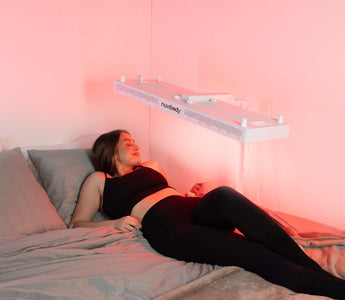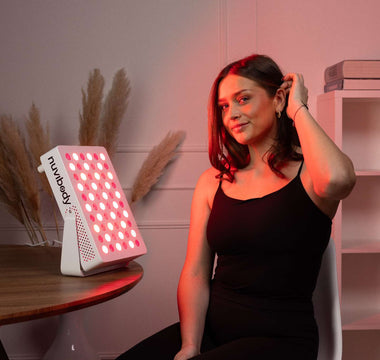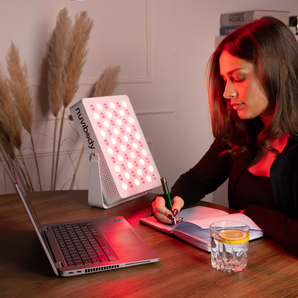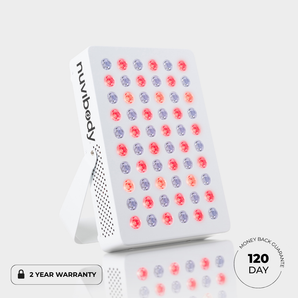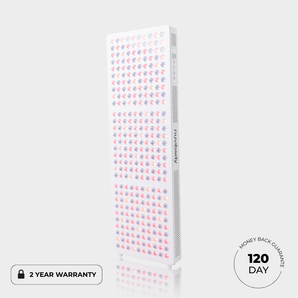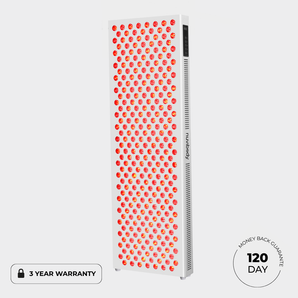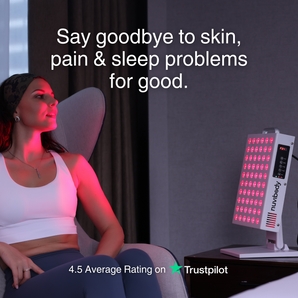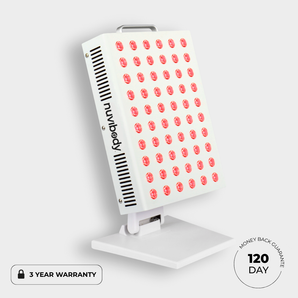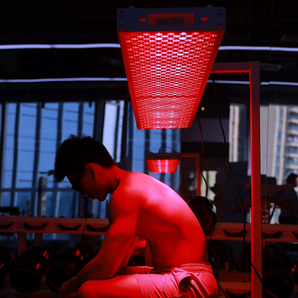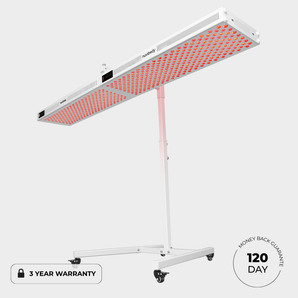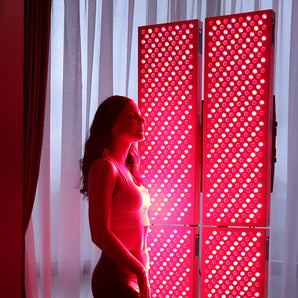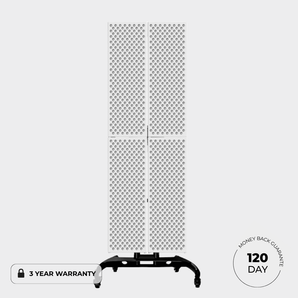Brain fog is something that more and more people are experiencing. Whether you’re suffering from fatigue, difficulty concentrating, memory loss or simply a reduced ability to think clearly, the effects can be quite disruptive to your daily functioning. But is there a way to alleviate this mental fog? Red light therapy is increasingly being touted as a possible solution for those struggling with brain fog. In this article, we explore how red light therapy can help alleviate brain fog and improve mental clarity, backed by scientific evidence .
What is brain fog and why does it occur?
Brain fog is not an official medical diagnosis, but rather a collection of symptoms that often accompany fatigue, stress, hormonal changes, or even chronic illness. It can occur as a result of factors such as sleep deprivation, poor diet, mental overload, or as a side effect of certain medications. When the brain is not functioning optimally, it can lead to a feeling of mental sluggishness and difficulty concentrating.
For many people, it is a temporary complaint, but for others, brain fog can be a long-term problem that affects their quality of life. It is therefore important to look for effective solutions that can help alleviate these symptoms.
How does red light therapy work?
Red light therapy uses specific wavelengths of light (usually between 630 and 850 nm) to stimulate the mitochondria in your cells. Mitochondria are responsible for producing energy in your cells. Exposure to red light increases the efficiency of the mitochondria, leading to more energy and improved cell activity.
Scientific studies show that red light therapy is not only effective for physical ailments, but can also have a positive effect on brain function. It can help improve blood flow to the brain, stimulate brain cells, and reduce inflammation in the brain – all factors that can play a role in brain fog.
Can red light therapy help with brain fog?
There is growing scientific evidence that red light therapy can be beneficial for brain function. Studies have shown that using red light can help improve mental clarity, reduce fatigue, and even improve focus and memory.
For example, a 2017 study found that red light therapy improved cognitive performance in people with mild cognitive impairment. This was attributed to improving energy metabolism in brain cells ( source ). Other studies suggest that red light therapy may help relieve symptoms of depression and anxiety, which often accompany brain fog ( source , source ).
In addition, the use of red light therapy can also contribute to a better quality of sleep . Sleep deprivation is one of the biggest causes of brain fog, and by promoting a healthy night's sleep, red light therapy can indirectly contribute to a reduction of mental fog.
The Benefits of Red Light Therapy for Brain Fog
- Increased energy production
Red light therapy helps activate the mitochondria in brain cells, resulting in more efficient energy production. This means your brain gets more energy, which is essential for better concentration and mental clarity. - Improved blood circulation to the brain
By increasing blood flow to the brain, red light therapy ensures that more oxygen and nutrients flow to brain cells. This helps the brain function better, which can help alleviate symptoms of brain fog. - Reduction of inflammation
Brain fog is often associated with inflammation in the brain. Red light therapy has anti-inflammatory effects that can help reduce this inflammation, which in turn can improve mental clarity. - Better sleep quality
Because red light therapy can contribute to better sleep quality , it can indirectly help alleviate brain fog. A good night's sleep is crucial for brain repair and maintaining a clear mind.
What is the correct dosage for red light therapy for brain fog?
The effectiveness of red light therapy depends greatly on the correct dosage . The ideal duration of a session varies between 5 and 20 minutes, depending on the desired effects and the intensity of the device. To maximize the benefits of red light therapy for brain fog, it is important to be consistent in its use.
When used regularly, red light therapy can help alleviate the symptoms of brain fog and provide optimal support to your brain. It is recommended to use the therapy 3 to 5 times per week for best results. Using a quality red light therapy device , such as the Nuvibody lamps , can help you get the most out of each session.
How to choose the right device for red light therapy?
Not all red light therapy devices are created equal, so it’s important to choose a high-quality device for the best results. Nuvibody offers devices that are specifically designed to deliver the highest performance, with precise wavelengths and power densities for maximum effectiveness.
When choosing a device , it is important to pay attention to the wavelength (between 630-850 nm) and the intensity of the light. A good device ensures that the right amount of energy is directed to the brain cells to achieve the best possible results.

Conclusion: Experience the benefits of red light therapy yourself
Red light therapy offers a promising solution for relieving brain fog and improving mental clarity. By boosting energy production in the brain, reducing inflammation and improving blood circulation, it can help improve concentration, memory and focus.
If you suffer from brain fog, regularly applying red light therapy can be a valuable addition to your daily routine. At Nuvibody, you will find top-quality red light therapy devices that can help you take full advantage of the benefits of red light therapy. Get started today and experience for yourself how this therapy can help you improve your mental clarity and promote your overall well-being.
Frequently Asked Questions and Answers
1. What is brain fog and what causes it?
Brain fog refers to a feeling of mental confusion, impaired concentration, forgetfulness, and a general lack of clarity in thinking. It can be caused by a variety of factors, including sleep deprivation, stress, hormonal changes, poor diet, or the use of certain medications. Chronic conditions such as fibromyalgia or depression can also contribute to brain fog.
2. How can red light therapy help with brain fog?
Red light therapy can help with brain fog by improving blood flow to the brain, reducing inflammation, and increasing energy production in brain cells. This can result in improved mental clarity, focus, and memory. It stimulates the mitochondria in brain cells, which are responsible for energy production, allowing your brain to function better.
3. How long will it take before I notice improvement in brain fog?
The effects of red light therapy can vary from person to person. Many people notice an improvement in mental clarity and focus within a few weeks, especially if they use the therapy regularly (3-5 times per week). In some cases, it may take several weeks to see significant results, depending on the severity of your brain fog and other factors that affect your brain function.
4. Can red light therapy treat the underlying causes of brain fog?
Red light therapy can help reduce symptoms that often accompany brain fog, such as fatigue and poor concentration. It can improve sleep quality and reduce inflammation, but it does not directly treat the underlying causes, such as stress or sleep deprivation. Therefore, it is best to combine red light therapy with other healthy habits, such as getting enough sleep and managing stress.
5. Is red light therapy suitable for everyone with brain fog?
In most cases, anyone with brain fog can benefit from red light therapy, as it helps improve brain function by increasing blood flow and energy production. However, it is always a good idea to consult a doctor beforehand, especially if you have any serious health conditions that may be contributing to your brain fog.
6. What is the correct wavelength of light for treating brain fog?
The optimal wavelength for treating brain fog is usually between 630 and 850 nm. Red light (around 660 nm) is effective for superficial skin problems and stimulating energy production, while near-infrared light (around 830-850 nm) penetrates deeper and helps improve brain function and reduce inflammation.
7. How long should I follow a session of red light therapy to reduce brain fog?
The length of a session can vary, but usually a session of 5 to 20 minutes is sufficient. For brain fog, a shorter session of 5-10 minutes can be effective, but it is important to be consistent in use, for example 3 to 5 times a week. You can adjust the duration and frequency depending on your experience and results.
8. Can red light therapy improve cognitive function in brain fog?
Yes, red light therapy can improve cognitive function by increasing energy production in brain cells and improving blood flow to the brain. This can result in improved memory, concentration, and mental clarity, which is often affected by brain fog.
9. Is red light therapy a replacement for other treatments for brain fog?
Red light therapy can be a valuable addition to other treatments for brain fog, but it is not a replacement for medical treatments or therapies that address the underlying causes of your brain fog. It is best to combine red light therapy with other healthy habits, such as a balanced diet, adequate sleep, and stress management.
10. Can red light therapy help with brain fog caused by depression or anxiety?
Yes, red light therapy can help with brain fog caused by depression or anxiety. Research has shown that red light therapy can relieve symptoms of depression and anxiety by improving energy metabolism in the brain and reducing inflammation, which contributes to better mental clarity.


